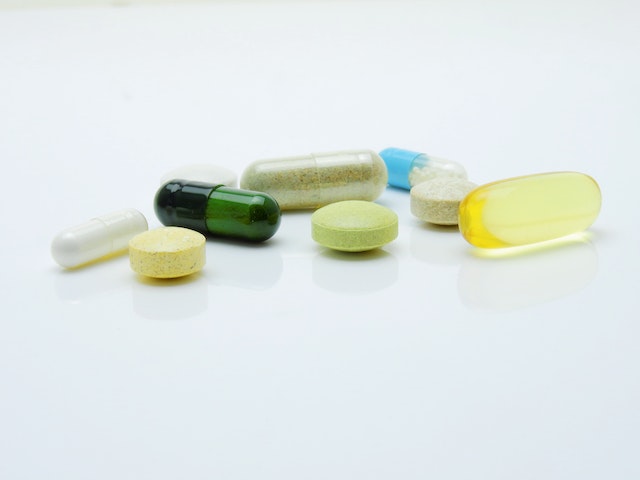I. Introduction
Medications play a crucial role in managing various health conditions, alleviating symptoms, and improving quality of life. However, ensuring medication safety is of utmost importance to avoid potential risks and maximize their benefits. Understanding dosage, side effects, and drug interactions are key factors in ensuring safe and effective medication use. In this blog post, we will delve into the fundamentals of medication safety, providing valuable insights and practical tips for patients and caregivers. By gaining a comprehensive understanding of dosage requirements, being aware of possible side effects, and recognizing potential drug interactions, individuals can make informed decisions and actively participate in their own healthcare journey. So let’s dive in and equip ourselves with the knowledge necessary to navigate the world of medications safely and confidently.
II. Understanding Dosage
Accurate dosage is essential for the safe and effective use of medications. It is crucial to follow the prescribed dosage instructions provided by healthcare professionals or indicated on the medication packaging. Different medications come in various dosage forms such as tablets, capsules, or liquids, each requiring specific administration techniques. When it comes to reading medication labels, it’s important to pay attention to details such as the strength of the medication, frequency of dosing, and any specific instructions regarding administration (e.g., with or without food). Additionally, measuring liquid medications accurately is vital, especially for pediatric patients or those who require precise dosing. Using a calibrated measuring device, such as a syringe or dosing cup, can help ensure the correct amount of medication is administered. Remember, when it comes to dosage, precision is key to achieve optimal therapeutic outcomes while minimizing the risk of adverse effects.
III. Potential Side Effects
Understanding the potential side effects of medications is crucial for promoting medication safety. Side effects are unintended reactions that can occur when taking a medication. While many side effects are mild and temporary, some can be severe or even life-threatening. It is important to be aware of common side effects associated with specific medications and their potential impact on daily life. These may include nausea, drowsiness, dizziness, or changes in appetite. Serious side effects, such as allergic reactions, difficulty breathing, or chest pain, require immediate medical attention. Managing side effects involves open communication with healthcare professionals, who can provide guidance on how to alleviate or cope with these effects. Sometimes, adjusting the dosage or switching to an alternative medication may be necessary. It is essential to remember that everyone’s response to medication can vary, and what may cause side effects in one person may not affect another. Being vigilant and proactive in recognizing and managing side effects can contribute to a safer and more successful medication experience.
IV. Drug Interactions
Drug interactions occur when two or more medications, or medications and certain foods or beverages, interact with each other and potentially affect their effectiveness or cause adverse effects. Understanding drug interactions is crucial to ensure medication safety. There are different types of drug interactions to be aware of, including drug-drug interactions (when two or more medications interact), drug-food interactions (when medications interact with specific foods or beverages), and drug-alcohol interactions (when medications interact with alcohol). Drug interactions can lead to a range of outcomes, from reducing the effectiveness of a medication to increasing the risk of side effects or even causing potentially dangerous reactions. It is important to discuss all medications, including prescription, over-the-counter, and herbal supplements, with healthcare professionals to identify possible interactions. They can provide guidance on timing medication doses, adjusting dosages, or avoiding certain foods or beverages to minimize the risk of interactions. Staying informed and proactive about drug interactions is essential for ensuring the safe and effective use of medications.
V. Medication Safety Tips
Maintaining medication safety goes beyond understanding dosage, side effects, and drug interactions. Here are some additional tips to enhance medication safety:
Proper storage and disposal of medications: Store medications in a cool, dry place away from direct sunlight and out of reach of children or pets. Follow specific storage instructions for medications that require refrigeration. When medications expire or are no longer needed, dispose of them properly by following local guidelines or participating in medication take-back programs to prevent misuse.
Adherence to prescribed medication regimen: Take medications as prescribed by healthcare professionals and follow the recommended schedule. Set reminders or use medication tracking apps to stay organized and avoid missed doses. If you have difficulties adhering to the regimen, communicate openly with your healthcare provider to explore alternative solutions.
Communicating with healthcare professionals about medications: Keep your healthcare provider informed about all the medications you are taking, including prescription, over-the-counter, and herbal supplements. Discuss any concerns, side effects, or changes in your health condition. This open dialogue will help healthcare professionals make informed decisions and provide appropriate guidance.
Importance of keeping an up-to-date medication list: Maintain an accurate and up-to-date list of all your medications, including names, dosages, and frequencies. This list can be shared with healthcare providers during appointments or in case of emergencies, ensuring that they have a comprehensive overview of your medication regimen.
Engaging in shared decision-making with healthcare providers: Actively participate in discussions with healthcare providers about your medications. Ask questions, seek clarification, and express any concerns you may have. Shared decision-making allows for a collaborative approach, ensuring that you are well-informed and involved in the decision-making process regarding your medication treatment.
By implementing these medication safety tips, individuals can create a solid foundation for safe and effective medication use. Remember, medication safety is a shared responsibility between patients, caregivers, and healthcare professionals, and by working together, we can enhance the overall quality and outcomes of medication therapy.
VI. Resources for Medication Safety
In today’s digital age, numerous resources and tools are available to support medication safety. Here are some valuable resources to consider:
Online resources and tools for checking drug information: Trusted websites, such as the U.S. Food and Drug Administration (FDA), National Institutes of Health (NIH), or reputable medical databases, provide comprehensive drug information. These resources offer details on drug indications, dosages, side effects, and interactions, empowering individuals to make informed decisions.
Mobile apps for medication reminders and tracking: There are various mobile applications available that can serve as helpful tools for medication management. These apps offer features such as medication reminders, dosage tracking, refill reminders, and the ability to create medication schedules. Some apps even provide medication interaction checkers and educational resources to enhance medication safety.
Support groups and communities for medication safety: Engaging with support groups or online communities focused on medication safety can provide a valuable platform for sharing experiences, insights, and tips with individuals facing similar challenges. These communities foster peer support and provide an opportunity to learn from others who have navigated medication-related issues.
Additionally, healthcare professionals, including pharmacists, are excellent resources for medication safety. They possess extensive knowledge and expertise in understanding medications, dosage, side effects, and interactions. Do not hesitate to reach out to them for guidance, clarification, or any concerns related to your medication therapy.
By utilizing these resources, individuals can further empower themselves with knowledge, tools, and support to ensure medication safety. Being proactive and informed is key to effectively managing medications and optimizing health outcomes.
VII. Conclusion
In conclusion, medication safety is paramount when it comes to optimizing health outcomes and minimizing risks. Understanding dosage, side effects, and drug interactions plays a vital role in ensuring safe and effective medication use. By following prescribed dosages, reading medication labels carefully, and accurately measuring liquid medications, individuals can minimize the risk of medication errors. Recognizing potential side effects, both common and serious, and promptly seeking medical attention when needed, promotes a proactive approach to managing medication-related challenges. Understanding drug interactions and actively discussing all medications with healthcare professionals helps to prevent potential complications and optimize treatment outcomes. Moreover, adhering to medication safety tips, such as proper storage and disposal, adherence to prescribed regimens, effective communication with healthcare providers, and maintaining an up-to-date medication list, further enhances medication safety. By utilizing online resources, mobile apps, and support groups, individuals can access additional tools and support to ensure medication safety. Prioritizing medication safety through knowledge, proactive engagement, and collaboration with healthcare professionals can lead to improved health outcomes and a better quality of life. Let’s commit ourselves to being informed advocates for our own medication safety and empowering others to do the same.

